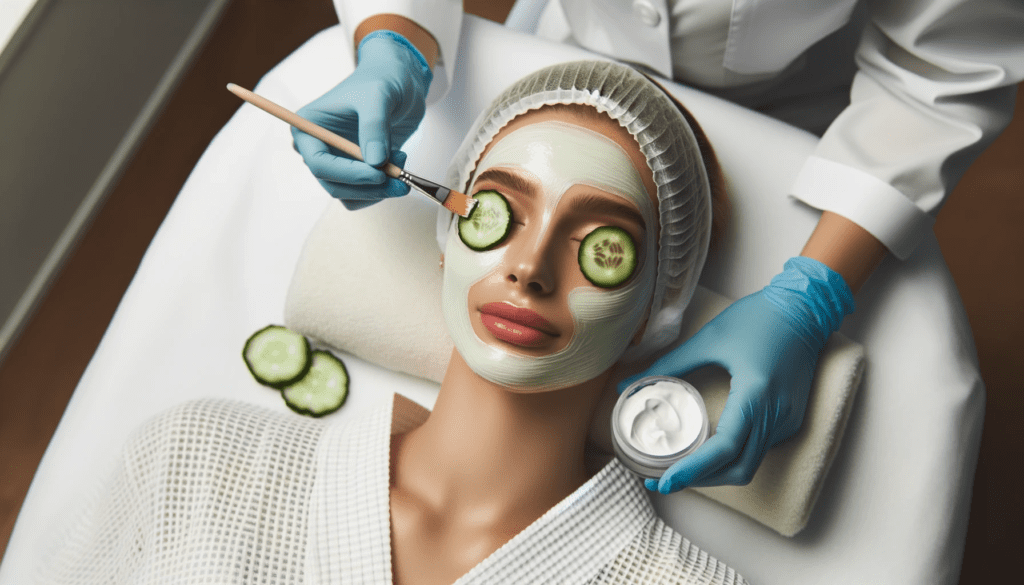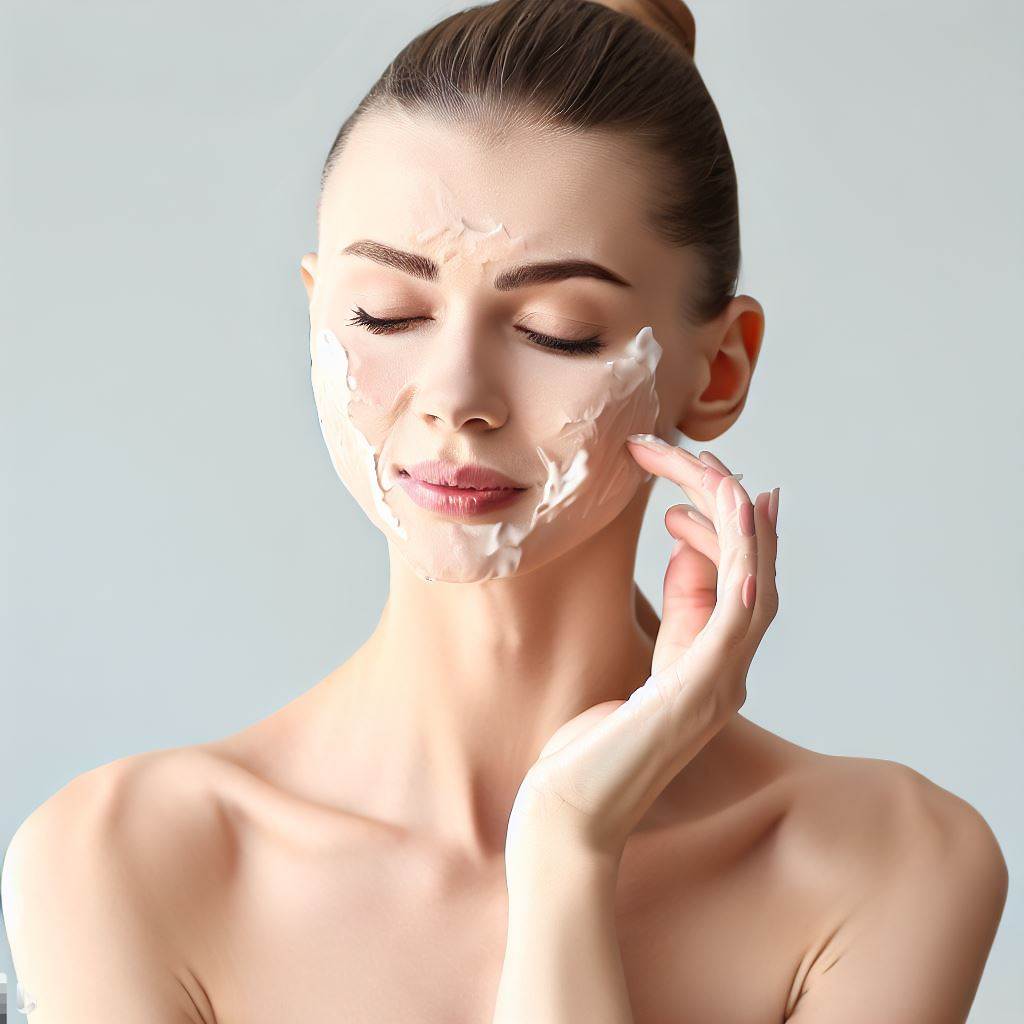Intro: In the realm of skincare, few treatments have garnered as much attention and acclaim as chemical peels. These treatments, hailed by dermatologists and beauty aficionados alike, promise to transform the skin, revealing a more youthful and radiant version of oneself. With the rise of self-care and beauty trends, chemical peels have surged in popularity, proving that they are more than just a fleeting trend, but a mainstay in modern skincare.
New to Chemical Peels? Understanding the Basics
As the quest for flawless, youthful skin continues, more and more individuals are discovering the benefits of chemical peels. If you’re new to this technique, understanding its foundation will help you appreciate its transformative potential.
What are Chemical Peels?
Chemical peels, at their core, are treatments that employ certain acids or enzymes to exfoliate the skin’s surface. This process allows for the removal of dead skin cells, making way for newer, fresher cells to come to the forefront.
- Brief Description and History of Chemical Peels: The history of chemical peels dates back to ancient times. Civilizations like the Egyptians used various natural acids like sour milk and fermented grapes to achieve smoother skin. Fast forward to today, and the science has evolved, giving us meticulously formulated peels designed for various skin types and concerns.
- The Primary Components and Types of Peels: Modern-day chemical peels can be broadly categorized into three main types based on their depth of penetration: superficial, medium, and deep peels. These can comprise of various acids, including glycolic acid, lactic acid, trichloroacetic acid (TCA), and phenol, among others. Each acid serves a unique purpose, targeting specific skin issues and delivering varied intensity levels.
The Science Behind the Magic
Peeling might sound daunting, but when understood, it unveils a beautifully orchestrated process that our skin naturally undergoes.
- How Chemical Peels Work at the Cellular Level:
- Chemical peels, depending on their strength, penetrate the skin’s layers to different depths. Once applied, they cause the skin to “injure” in a controlled manner. This injury prompts the skin to go into a healing mode, accelerating the cell turnover rate. In this process, older, damaged skin cells are shed off, making way for new, healthy cells to replace them.
- The Process of Skin Rejuvenation and Collagen Boost: One of the key outcomes of a chemical peel is the stimulation of collagen production. Collagen is the protein responsible for our skin’s elasticity and firmness. As the skin heals post-peel, there’s a surge in collagen synthesis, leading to plumper, firmer, and more youthful skin. Additionally, by targeting and diminishing hyperpigmentation, fine lines, and uneven texture, chemical peels play a pivotal role in comprehensive skin rejuvenation.
An Efficient Technique to Enhance the Look of the Skin
The quest for luminous, younger-looking skin has seen countless innovations over the years. Among these, chemical peels have stood out, earning the respect and loyalty of skincare enthusiasts and professionals alike. So, why is this method hailed as an efficient technique to revitalize the skin?
The Immediate and Long-term Benefits
Diving into the world of chemical peels reveals a spectrum of benefits, some apparent right after the treatment, while others unfold as time progresses.
- Brighter Complexion, Reduced Fine Lines, and More: Just one session can dramatically enhance the skin’s texture and tone. Dead skin cells that often dull the complexion are sloughed off, revealing a fresher and more radiant layer beneath. Fine lines, a common grievance as we age, are minimized, giving the face a smoother appearance. Other immediate benefits include reduced pore size, lightened dark spots, and a more even skin tone.
- How Regular Sessions Can Lead to Lasting Skin Improvements: Like many good things in life, consistency with chemical peels often yields the best results. Regular sessions ensure that the skin continually renews itself, maximizing the benefits each time. Over prolonged periods, this leads to significant reductions in hyperpigmentation, acne scars, and even deeper wrinkles. Furthermore, the increased collagen production ensures the skin remains supple and elastic, combating the sagging that often accompanies aging.
Who Should Consider Chemical Peels?
With the myriad of skincare treatments available, it’s vital to determine if chemical peels are the right fit for your unique skin type and concerns.
- Differentiating Between Skin Types and Needs: Not all skins are made equal. Dry, oily, combination, sensitive, and mature skin each have unique characteristics and needs. Fortunately, the versatility of chemical peels means there’s likely a perfect fit for every type. Superficial peels, often gentle, are suitable for those with sensitive skin or first-timers. Medium and deep peels penetrate further and are often recommended for mature skin or those with more severe skin concerns.
- Addressing Specific Skin Issues with Targeted Peels: Beyond skin type, it’s essential to consider individual skin issues. Acne-prone individuals might benefit from salicylic acid peels, which delve deep into the pores, exfoliating from within. Those battling with sun damage or melasma might opt for glycolic or lactic acid peels known for their hyperpigmentation targeting properties. A consultation with a skilled dermatologist can guide individuals to the most suitable peel for their concerns.
Steps to Ensure Safe and Effective Peel Sessions
Venturing into the world of chemical peels can be both exhilarating and nerve-wracking. To ensure that your journey enhances your skin’s beauty without compromising its health, there are pivotal steps to follow both before and after the peel.
Preparing Your Skin for Its First Chemical Peel
Taking the plunge and scheduling your first chemical peel? Here’s how to make sure your skin is ready for the transformation:
- Pre-peel Skincare Routine and Tips: Preparing your skin is the first step to maximizing the benefits of a chemical peel. About a week or two before your scheduled appointment, it’s recommended to:
- Avoid direct sun exposure and always use sunscreen.
- Stop using retinoids, alpha hydroxy acids (AHA), or any other exfoliating products.
- Keep your skin hydrated by incorporating a good moisturizer into your routine.
- Refrain from waxing or any other abrasive skin treatments.
- What to Expect During Your First Session: Your first chemical peel can be a mix of excitement and uncertainty. Initially, the skin will be cleansed thoroughly. Post-cleansing, the chosen peel solution is applied. Most people feel a tingling or mild burning sensation, but it’s usually tolerable and lasts for a few minutes. Once the peel is neutralized and removed, a soothing agent is often applied. The whole procedure typically takes less than an hour.
Post-Peel Care: Nurturing Your New Skin
The journey doesn’t end once the peel is off. Proper post-peel care is paramount to ensure optimal results and a speedy recovery:
- Essential Post-peel Skincare Steps:
- Stay out of direct sunlight and always wear a broad-spectrum sunscreen.
- Avoid hot showers or saunas for a couple of days.
- Refrain from picking or peeling any flaking skin.
- Continue hydrating the skin and avoid using makeup for at least 24 hours.
- Skip any active skincare ingredients like retinoids or AHAs for about a week.
- Addressing Potential Side Effects and Maximizing Results: It’s natural to experience some redness, similar to a sunburn, following a peel. This soon gives way to shedding or flaking. Using a gentle moisturizer can help ease this process. Serious side effects are rare but, if swelling, severe burns, or signs of an allergic reaction are observed, it’s crucial to consult with your dermatologist immediately.
Chemical Peels vs. Other Skin Enhancement Techniques
In a market flooded with options for skin rejuvenation, what makes chemical peels stand out? Let’s delve into a comparative analysis.
Why Choose Chemical Peels Over Alternatives?
The landscape of skin treatments is vast, but chemical peels continue to be a preferred choice for many. Let’s discover why:
- Comparing Results, Costs, and Safety: While treatments like laser resurfacing, microdermabrasion, or microneedling offer significant benefits, chemical peels often stand out due to their versatility. They cater to various skin types and issues with a comparatively lower price point. In terms of safety, when performed by certified professionals, chemical peels have a robust track record. The key is tailoring the peel type to the individual’s skin needs.
- Real-life Testimonials and Transformations: One of the most compelling arguments for chemical peels is the multitude of positive testimonials. From individuals battling stubborn acne scars to those looking to reverse the signs of aging, the transformations post-peel are often remarkable. Adding to this, the minimal downtime and non-invasive nature of the procedure make it a favorite among those looking for efficient yet less aggressive skin solutions.
Finding the Right Dermatologist or Esthetician
Choosing to undergo a chemical peel is just the first step; the journey truly begins when you embark on the quest to find the right professional. Your skin is precious, and ensuring it’s in competent hands is imperative.
Essential Qualities and Credentials
Embarking on a chemical peel journey requires trust—not just in the process, but more importantly, in the person administering it.
- Importance of Consulting with Trained Professionals: The realm of skincare and beauty sees countless trends and treatments emerging regularly. However, the intricacies of a procedure like chemical peels require specialized knowledge. Only a trained professional, be it a dermatologist or a licensed esthetician, possesses the depth of knowledge about skin types, potential reactions, and the myriad of peel options available. Their expertise ensures not only the effectiveness of the treatment but also the safety of your skin.
- What to Ask During Your First Consultation: Your initial consultation is the perfect opportunity to gauge the proficiency and suitability of the professional:
- Inquire about their qualifications and experience specifically with chemical peels.
- Ask about the types of peels they offer and what they recommend for your specific skin concerns.
- Discuss any past skin treatments, allergies, or medical conditions.
- Request before-and-after photos of their past clients to see actual results.
- Understand the post-treatment care and any potential downtime.
Conclusion:
The allure of chemical peels is undeniable. From ancient civilizations using primitive versions of peels to today’s scientifically advanced treatments, the core goal remains unchanged: revitalized, radiant skin. As we’ve journeyed through the ins and outs of this transformative treatment, one element stands clear—its potential to truly revolutionize one’s skincare routine. For those teetering on the edge of decision, remember: radiant skin awaits, and the magic of chemical peels might just be the key. So, why wait? Dive into research, consult professionals, and embark on a journey to unveil your skin’s true potential.




